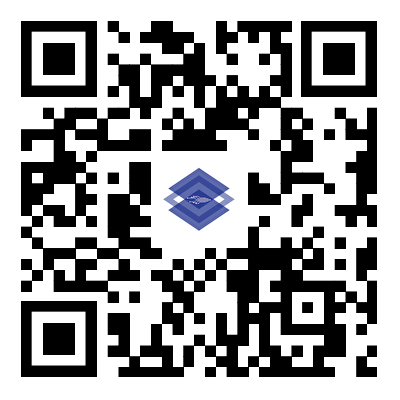- English
- Español
- Português
- русский
- Français
- 日本語
- Deutsch
- tiếng Việt
- Italiano
- Nederlands
- ภาษาไทย
- Polski
- 한국어
- Svenska
- magyar
- Malay
- বাংলা ভাষার
- Dansk
- Suomi
- हिन्दी
- Pilipino
- Türkçe
- Gaeilge
- العربية
- Indonesia
- Norsk
- تمل
- český
- ελληνικά
- український
- Javanese
- فارسی
- தமிழ்
- తెలుగు
- नेपाली
- Burmese
- български
- ລາວ
- Latine
- Қазақша
- Euskal
- Azərbaycan
- Slovenský jazyk
- Македонски
- Lietuvos
- Eesti Keel
- Română
- Slovenski
- मराठी
- Srpski језик
How to use blockchain technology to improve the transparency of PCBA processing
2025-03-25
In the PCBA (Printed Circuit Board Assembly) processing industry, ensuring the transparency of the production process and the reliability of data is the key to improving product quality and market trust. Traditional supply chain management methods often have problems such as information asymmetry, data tampering and traceability difficulties. Blockchain technology, as a decentralized distributed ledger technology, provides an innovative solution to these problems. This article will explore how to use blockchain technology to improve the transparency of PCBA processing and introduce its practical applications.

I. Overview of blockchain technology
1. Basic principles of blockchain
Blockchain is a decentralized distributed ledger technology that ensures the immutability and transparency of data by dividing data into blocks and distributing them in network nodes. Each block contains a set of transaction records, and each block is connected to the previous block through an encryption algorithm to form a chain. This structure makes it difficult for data on the blockchain to be tampered or forged.
2. Advantages of blockchain
The core advantages of blockchain technology include decentralization, data immutability and traceability. These advantages make blockchain have significant application potential in improving supply chain transparency, ensuring data authenticity and enhancing trust.
II. Application of blockchain in PCBA processing
1. Improve supply chain transparency
In the PCBA processing process, the supply chain involves multiple links, including raw material supply, production and processing, and final product delivery. Using blockchain technology, the transaction records and production data of each link can be recorded on the blockchain in real time, realizing the immutability and transparent display of data. Through blockchain, all participants can query and verify the information in the supply chain in real time, reduce information asymmetry, and improve the transparency of the supply chain.
2. Ensure data authenticity
The decentralized nature of blockchain technology ensures the authenticity and integrity of data. In PCBA processing, key data such as production data, quality inspection results, and logistics information can be recorded and verified through blockchain. Once these data are written to the blockchain, they cannot be tampered with, thereby ensuring the reliability and authenticity of the data. This is particularly important for preventing false data and counterfeit and shoddy products.
3. Realize product traceability
Product traceability is an important requirement in PCBA processing. Through blockchain technology, full traceability of products can be achieved. Key data of each production link, including raw material sources, production processes, and quality inspections, can be recorded on the blockchain. In this way, when quality problems occur, enterprises can quickly trace back to specific production links, find out the root causes of the problems and take improvement measures. This traceability not only improves the quality management level of products, but also enhances customer trust.
4. Optimize contract management
Blockchain technology supports the implementation of smart contracts, which are computer protocols that automatically execute, control and record contract terms. In PCBA processing, smart contracts can automatically handle matters such as supplier contracts, payment processes and production plans, reducing human intervention and errors. This automated contract management not only improves work efficiency, but also reduces contract disputes and execution costs.
III. Strategies for implementing blockchain technology
1. Demand analysis and planning
Before implementing blockchain technology, detailed demand analysis and planning are required. Understand the actual needs, existing processes and pain points of the enterprise, and design and deploy suitable blockchain solutions based on this information. Develop clear implementation goals and plans to ensure that the blockchain system can effectively meet the needs of the enterprise.
2. Choose the right blockchain platform
Choosing the right blockchain platform is the key to successful implementation. There are currently multiple blockchain platforms available on the market, such as Ethereum, Hyperledger Fabric, etc. According to the needs and technical requirements of the enterprise, select a suitable platform, and carry out system integration and customized development.
3. Training and promotion
The implementation of blockchain technology requires the training and promotion of relevant personnel. Ensure that participants understand the basic concepts and application methods of blockchain and can operate and manage the blockchain system proficiently. At the same time, promote the application of blockchain technology within the enterprise to enhance the awareness and acceptance of blockchain technology by all employees.
4. Monitoring and maintenance
After the blockchain system is put into use, regular monitoring and maintenance are important measures to ensure the stable operation of the system. Monitor the operating status of the system, solve possible problems in a timely manner, and optimize and upgrade the system according to actual needs.
Conclusion
Using blockchain technology to improve the transparency of PCBA processing can effectively solve the problems of information asymmetry, data tampering and traceability difficulties in traditional supply chain management. By improving the transparency of the supply chain, ensuring the authenticity of data, realizing product traceability and optimizing contract management, enterprises can improve production efficiency, enhance customer trust, and gain market competitive advantages. The implementation of blockchain technology requires detailed demand analysis, selection of appropriate platforms, training of relevant personnel, and system monitoring and maintenance. With the continuous advancement of technology, blockchain will play an increasingly important role in the field of PCBA processing.
-
Delivery Service






-
Payment Options









